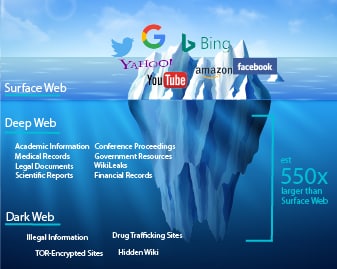Without a doubt, Windows 7 has been incredibly successful and popular since it first launched on July 22, 2009. According to StatCounter, 17.91% of US-based desktops were still running the decade-old operating system through the end of 2019.
However, in the light of the success of Windows 10, it only makes sense that Microsoft dedicate their resources to improving the new OS.
Now don’t worry. If you are using Windows 7 now, we are not saying that when you turn on your PC on January 15 it won’t work. You will still be able to use Windows 7 after it has reached End of Life status. However, just because you can use it, doesn’t mean that you should.
Windows 7 End of Life: What it Means for Your Security
Security implications of any operating system reaching End of Life are without a doubt one of the biggest concerns that need to be taken into consideration. In the past, Microsoft has commonly released “booster” security patches leading up to an OS reaching its EOL date in an effort to improve security one last time. However, once those last patches are released hackers have free reign to try and attack the systems.
It’s important to remember that the overwhelming majority of cyberattacks are not targeted, but rather they simply occur wherever a hacker could successfully gain access. Hackers are opportunists, and they choose the easiest target. Outdated operating systems have long been a resource for hackers who can leverage previously known vulnerabilities and expand upon them to gain access to a system. We saw this happen with WannaCry and Windows XP fans who held on after EoL. With 17.91% of nearly a billion Microsoft users worldwide still operating on Windows 7, hackers will have plenty of incentive to try and exploit the operating system once Microsoft releases their final patches.
The facts are clear. The sooner you can get away from Windows 7, the better.
Windows 7 End of Life: What’s Next?
If you are looking to make a decision on what to migrate to from Windows 7, you have several options, including:
- Migrate to Windows 10
- Migrate to a Linux OS such as Ubuntu
- Migrate to MacOS
All of these options come with pros and cons. We recommend working with IT experts, such as Montra, to decide which course is best for your business needs.
If you are trying to decide what your best option is for moving off of Windows 7, reach out to our experts today for a consultation.


 Many estimate that the Dark Web is 550 times larger than the Surface Web and growing. It’s actually difficult to know for sure how big the Dark Web is. The Dark Web operates differently than the Internet we see every day, or “Surface Web.” Users on the Dark Web use secure browsers, such as Tor, that render their identity and location untraceable. This is accomplished by routing web page requests through numerous proxy servers around the globe which makes IP addresses unidentifiable. The ability to operate anonymously makes the Dark Web an ideal marketplace for stolen data and illegal activity. Experts estimate that as much as 50% of the data on the Dark Web is illegal or illicit material. In short, it is the last place you want to find your company’s sensitive data. Unfortunately, digital credentials are among the most valuable assets on the Dark Web. An article by
Many estimate that the Dark Web is 550 times larger than the Surface Web and growing. It’s actually difficult to know for sure how big the Dark Web is. The Dark Web operates differently than the Internet we see every day, or “Surface Web.” Users on the Dark Web use secure browsers, such as Tor, that render their identity and location untraceable. This is accomplished by routing web page requests through numerous proxy servers around the globe which makes IP addresses unidentifiable. The ability to operate anonymously makes the Dark Web an ideal marketplace for stolen data and illegal activity. Experts estimate that as much as 50% of the data on the Dark Web is illegal or illicit material. In short, it is the last place you want to find your company’s sensitive data. Unfortunately, digital credentials are among the most valuable assets on the Dark Web. An article by